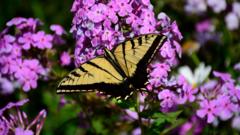Research from Binghamton University discovered that over the past two decades, the US has seen a 22% reduction in butterfly numbers, with one-third of species significantly impacted. Notably, some, like Julia's Skipper, have lost over 90% of their populations. The alarming trend has been linked to habitat loss, pesticide use, and climate change, threatening both ecosystems and food production. However, experts believe that with targeted conservation efforts, there is potential for recovery.
US Butterfly Populations Plunge by 22% Amid Conservation Calls

US Butterfly Populations Plunge by 22% Amid Conservation Calls
A recent study reveals a staggering decline in butterfly populations across the US, highlighting urgent needs for conservation interventions.
In an extensive analysis, Binghamton University researchers noted a significant decline in US butterfly populations, with their findings indicating a 22% reduction from 2000 to 2020. They assessed over 12.6 million butterfly sightings and identified that one-third of butterfly species are experiencing serious declines. Among the most affected are the Florida white, Hermes copper, and West Virginia white butterflies, which have all fallen by more than 98% in numbers. This decline has raised alarms as it indicates that even adaptable species face stark challenges.
Professor Eliza Grames, a lead researcher, remarked on the sobering scale of the decline, which mirrors global patterns but highlights specific vulnerabilities in the US, especially in the Southwest region, where drought conditions exacerbate the situation. Butterflies play a crucial role in pollination, making their reduction concerning for food production and environmental health.
Though habitat loss, pesticide use, and climate change are significant factors driving these declines, experts emphasize hope for recovery. They suggest that butterflies are resilient, with potential for rebound through actions like planting wildflowers and minimizing pesticide application. Moreover, they advocate for governmental support in conservation policies to protect these vital pollinators.
The findings could influence conservation strategies and highlight the need to prioritize butterflies in protection efforts, ensuring that these essential insects are safeguarded for future generations.
Professor Eliza Grames, a lead researcher, remarked on the sobering scale of the decline, which mirrors global patterns but highlights specific vulnerabilities in the US, especially in the Southwest region, where drought conditions exacerbate the situation. Butterflies play a crucial role in pollination, making their reduction concerning for food production and environmental health.
Though habitat loss, pesticide use, and climate change are significant factors driving these declines, experts emphasize hope for recovery. They suggest that butterflies are resilient, with potential for rebound through actions like planting wildflowers and minimizing pesticide application. Moreover, they advocate for governmental support in conservation policies to protect these vital pollinators.
The findings could influence conservation strategies and highlight the need to prioritize butterflies in protection efforts, ensuring that these essential insects are safeguarded for future generations.





















